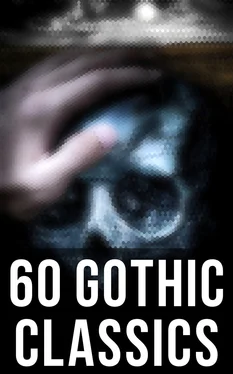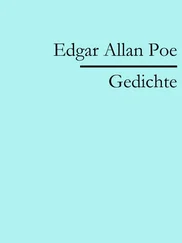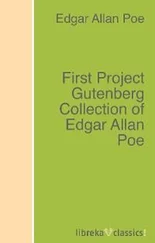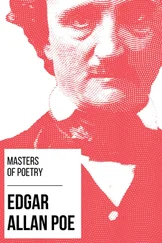29. Istakar This city was the ancient Persepolis, and capital of Persia, under the kings of the three first races. The author of Lebtarikh writes, that Kischtab there established his abode, erected several temples to the element of fire, and hewed out for himself and his successors sepulchres in the rocks of the mountain contiguous to the city. The ruins of columns and broken figures which still remain, defaced as they were by Alexander and mutilated by time, plainly evince that those ancient potentates had chosen it for the place of their interment. Their monuments, however, must not be confounded with the superb palace reared by Queen Homai, in the midst of Istakhar; which the Persians distinguish by the name of Tchilminar , or the forty watch-towers. The origin of this city is ascribed by some to Giamschid, and others carry it higher; but the Persian tradition is, that it was built by the Peris , or Fairies, when the world was governed by Gian Ben Gian.—D’Herbelot, p. 327.
30. Gian Ben Gian By this appellation was distinguished the monarch of that species of beings, whom the Arabians denominate Gian or Ginn ; that is, Genii ; and the Tarikh Thabari, Peris , Feez , or Fairies . He was renowned for his warlike expeditions and stupendous structures. According to Oriental writers, the pyramids of Egypt were amongst the monuments of his power. The buckler of this mighty sovereign, no less famous than that of Achilles, was employed by three successive Solimans, to achieve their marvellous exploits. From them, it descended to Tahamurath, surnamed Divbend , or Conqueror of the Giants. This buckler was endowed with most wonderful qualities, having been fabricated by talismanic art; and was alone sufficient to destroy all the charms and enchantments of demons or giants; which, on the contrary, were wrought by magic. Hence we are no longer at a loss for the origin of the wonderful shield of Atlante. The reign of Gian Ben Gian over the Peris is said to have continued for two thousand years; after which, Eblis was sent by the Deity to exile them, on account of their disorders, and confine them in the remotest region of the earth.—D’Herbelot, p. 396. Bailly, Sur l’Atlantide , p. 147.
31. ... the talismans of Soliman The most famous talisman of the East, and which could control even the arms and magic of the dives or giants, was Mohur Solimani , the seal or ring of Soliman Jared, fifth monarch of the world after Adam. By means of it the possessor had the entire command, not only of the elements, but also of demons and every created being.—Richardson’s Dissertation on the Languages, etc., of Eastern Nations , p. 272. D’Herbelot, p. 820.
32. ... pre-Adamite sultans These monarchs, which were seventy-two in number, are said to have governed each a distinct species of rational beings, prior to the existence of Adam. Amongst the most renowned of them were Soliman Raad, Soliman Daki, and Soliman Di Gian Ben Gian.—D’Herbelot, p. 820.
33. ... beware how thou enterest any dwelling Strange as this injunction may seem, it is by no means incongruous to the customs of the country. Dr. Pocock mentions his travelling with the train of the governor of Faiume, who, instead of lodging in a village that was near, passed the night in a grove of palm-trees.— Travels , vol. i, p. 56.
34. ... the ass of Balaam, the dog of the seven sleepers, and the other animals admitted into the paradise of Mahomet It was a tenet of the Mussulman creed, that all animals would be raised again, and many of them honoured with admission to paradise. The story of the seven sleepers, borrowed from Christian legends, was this: In the days of the Emperor Decius, there were certain Ephesian youths of a good family, who, to avoid the flames of persecution, fled to a secret cavern, and there slept for a number of years. In their flight towards the cave, they were followed by a dog, which, when they attempted to drive back, said, “ I love those who are dear unto God; go sleep, therefore, and I will guard you. ” For this dog the Mahometans retain so profound a reverence, that their harshest sarcasm against a covetous person is, “He would not throw a bone to the dog of the seven sleepers.” It is even said that their superstition induces them to write his name upon the letters they send to a distance, as a kind of talisman, to secure them a safe conveyance.— Religious Ceremonies , vol. vii, p. 74 n. Sale’s Koran , chap. xviii and notes.
35. Rocnabad The stream thus denominated flows near the city of Schiraz. Its waters are uncommonly pure and limpid, and their banks swarded with the finest verdure.
36. Do you, with the advice of my mother, govern Females in the East were not anciently excluded from power. In the Story of Zeyn Alasnam and the King of the Genii, the mother of Zeyn undertakes, with the aid of his viziers, to govern Bassora during his absence on a similar expedition.
37. Chintz and muslin For many curious particulars relative to these articles, consult Mr. Delaval’s Inquiry concerning the Changes of Colours, etc. ; to which may be added, Lucretius, lib. iv, 5. Petronius, c. 37. Martial, viii, Ep. 28, 17; xiv, Ep. 150. Plutarch, in Vita Catonis . Pliny, viii, 48.
38. Moullahs Those amongst the Mahometans who were bred to the law had this title; and from their order the judges of cities and provinces were taken.
39. ... the sacred Caaba That part of the temple at Mecca which is chiefly revered, and, indeed, gives a sanctity to the rest, is a square stone building called the Caaba, probably from its quadrangular form. The length of this edifice, from north to south, is twenty-four cubits, and its breadth, from east to west, twenty-three. The door is on the east side, and stands about four cubits from the ground, the floor being level with the threshold. The Caaba has a double roof, supported internally by three octangular pillars of aloes wood, between which, on a bar of iron, hangs a row of silver lamps. The outside is covered with rich black damask, adorned with an embroidered band of gold. This hanging, which is changed every year, was formerly sent by the caliphs.—Sale’s Preliminary Discourse , p. 152.
40. ... the supposed oratory The dishonouring such places as had an appearance of being devoted to religious purposes, by converting them to the most abject offices of nature, was an Oriental method of expressing contempt, and hath continued from remote antiquity.—Harmer’s Observations , vol. ii, p. 493.
41. ... regale these pious poor souls with my good wine from Schiraz The prohibition of wine in the Koran is so rigidly observed by the conscientious, especially if they have performed the pilgrimage to Mecca, that they deem it sinful to press grapes for the purpose of making it, and even to use the money arising from its sale.—Chardin, Voy. de Perse , tom. ii, p. 212. Schiraz was famous in the East for its wines of different sorts, but particularly for its red , which was esteemed more highly than even the white wine of Kismische .
42. ... the most stately tulips of the East The tulip is a flower of Eastern growth, and there held in great estimation. Thus, in an ode of Mesihi: “The edge of the bower is filled with the light of Ahmed; among the plants the fortunate tulips represent his companions.”
43. ... certain cages of ladies There are many passages of the Moallakat in which these cages are fully described. Thus, in the poem of Lebeid: “How were thy tender affections raised, when the damsels of the tribe departed; when they hid themselves in carriages of cotton, like antelopes in their lair, and the tents as they were struck gave a piercing sound! “They were concealed in vehicles, whose sides were well covered with awnings and carpets, with fine-spun curtains and pictured veils.”— Moallakat , by Sir W. Jones, pp. 46, 35. See also Lady M. W. Montagu, Let. xxvi.
Читать дальше












